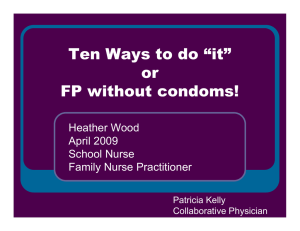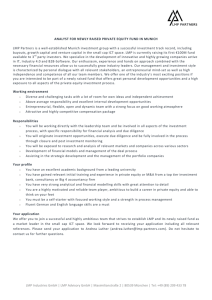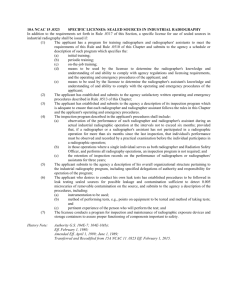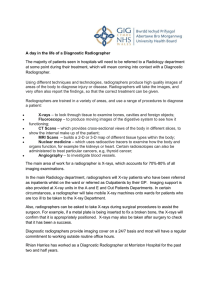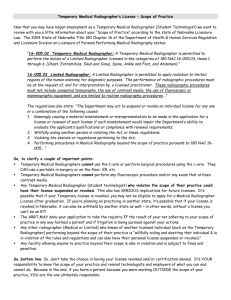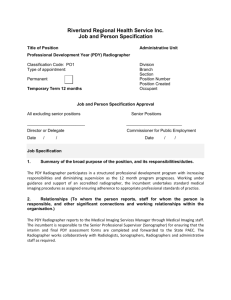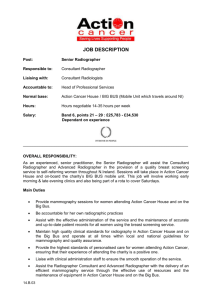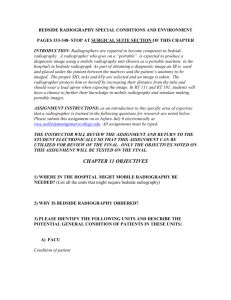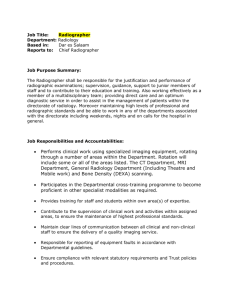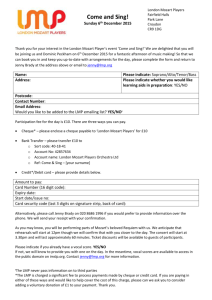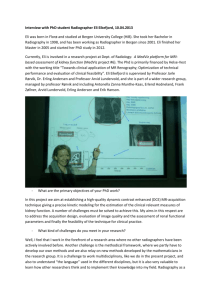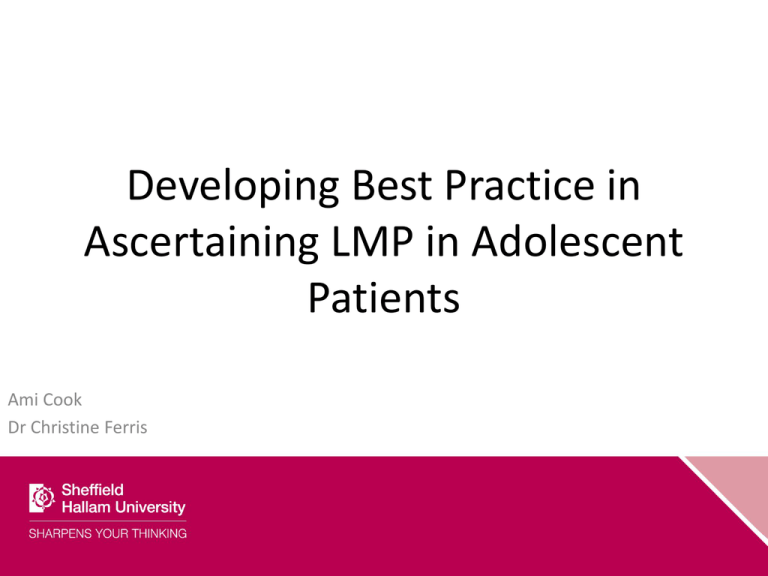
Developing Best Practice in
Ascertaining LMP in Adolescent
Patients
Ami Cook
Dr Christine Ferris
Why focus on LMP?
•
•
•
•
•
Biohazards from ionising radiation
Teenage pregnancies (12-18 years)
Variable understandings of patients
Parent reaction
Lack of national guidelines
Context of the limping child
Any imaging of the Pelvis or Hips
Female patient of child-bearing age
• LMP required
Key issues from theory
• Communication
• Sex Education - religion & culture
• Blanket Testing (surgical approach)
Communication (theory)
•
•
•
•
Stereotypes
Skills variable between ages of adolescence
Urban/ rural variation regarding sexual activity
"Subjects thought it was improper to ask them
about their sexual activity"
Sex education (theory)
•
•
•
•
Religion/culture
Age - mainly delivered at age 14
Negative perceptions
Variable standard of teaching
Blanket Testing (theory)
•
•
•
•
•
Validity of response
Ethical issues - consent for pregnancy test
Religious issues
Privacy issues
Professional responsibility of giving test
results
Method
•
•
•
•
Qualitative approach
Semi structured interview
Open ended questions derived from theory
Opportunities for identifying issues throughout the
interview
• Final year students
• Thematic analysis of data
Advantages and limitations
• Captures people's experiences and views
• Allows expression in own words important as
tacit area of practice
• Identify issues
• Does not give an indication on spread of
practice
Parental Presence
Key theme highlighted by negative responses
received by participants.
Issues described:
• Emancipated minors
• Confidentiality
• Social and religious influences
Parental Presence
Data from study:
•"difficult"
•"parents reluctant to
leave"
•"parents cause an issue
when asked to leave"
Findings from literature
• Some patients will withheld
information if they thought
it would get back to parents
• 12 - 15 years olds prefer no
parental presence
• "Every effort should be
made to respect a child's
privacy
Religion/culture
Participants identified this as an issue and one
with little training help:
• Amending practice
• Lack of understanding
• Changing policy and legal framework
• Language barriers
Religion/culture
Data from study:
•"taboo subject in some
cultures"
•"guardian would not
leave the room"
•"religion is an issue but I
don't know how to change
my practice"
•"language barriers"
Findings from literature:
• Professionals should
recognise barriers of
different cultures
• Not adapting care can be
deemed discriminatory
• Adjusting policy could
cause religion induced
conflict
Sex of Radiographer
Female participants spoke of their own
preferences and male participants spoke on
reflection of own experiences:
• Patient preference
• Discussing sexual activity
• Age of patient
Sex of Radiographer
Data from study:
•"makes a difference"
•"important to younger girls"
•"does affect the response"
•"young girl with a young male
radiographer plus the
undignified nature of
radiography"
Findings from literature:
•Some patients feel more
comfortable with
professionals of the same
sex
•Do not feel comfortable
discussing sexual activity
Inconsistent documentation
• Currently no standard – participants described
variation between clinical placements
• Creating a standard form would promote
consistency
• Radiographers can be too relaxed
• Confusion can cause lack of documentation
Inconsistent documentation
Data from study:
•"dates should be
recorded and not just a
signature"
•"signature's not concrete
evidence for a legal case"
•"trusting the theatre
staff"
Findings from literature:
• No policy will guarantee
100% detection
• Standardized form
would promote
continuity
• Question the validity of
spoken confirmation
Training needs
Participants were asked if they felt University
could prepare them for this aspect of practice:
• Communication with age-group not taught
• Little understanding of different religions and
cultures
• Scenario-based teaching would be beneficial
Training needs
Data from study:
• "scenario based
sessions"
• "go over the LMP dates
and understand the
basics"
• "Uni don't prepare"
Findings from literature:
• Communication is not
taught
• Healthcare should be
age-specific
• Understanding of
religion and culture
Conclusions
• National Policy, Local Policy or Professional
Guidance
• Standardization between trusts
• Educational needs met – communication,
religion/culture, scenario-based
Further Research
• Look into the views of qualified Radiographers
and compare issues raised
• Develop training needs of the student
Diagnostic Radiographer
Thank You for Listening
Any Questions?

